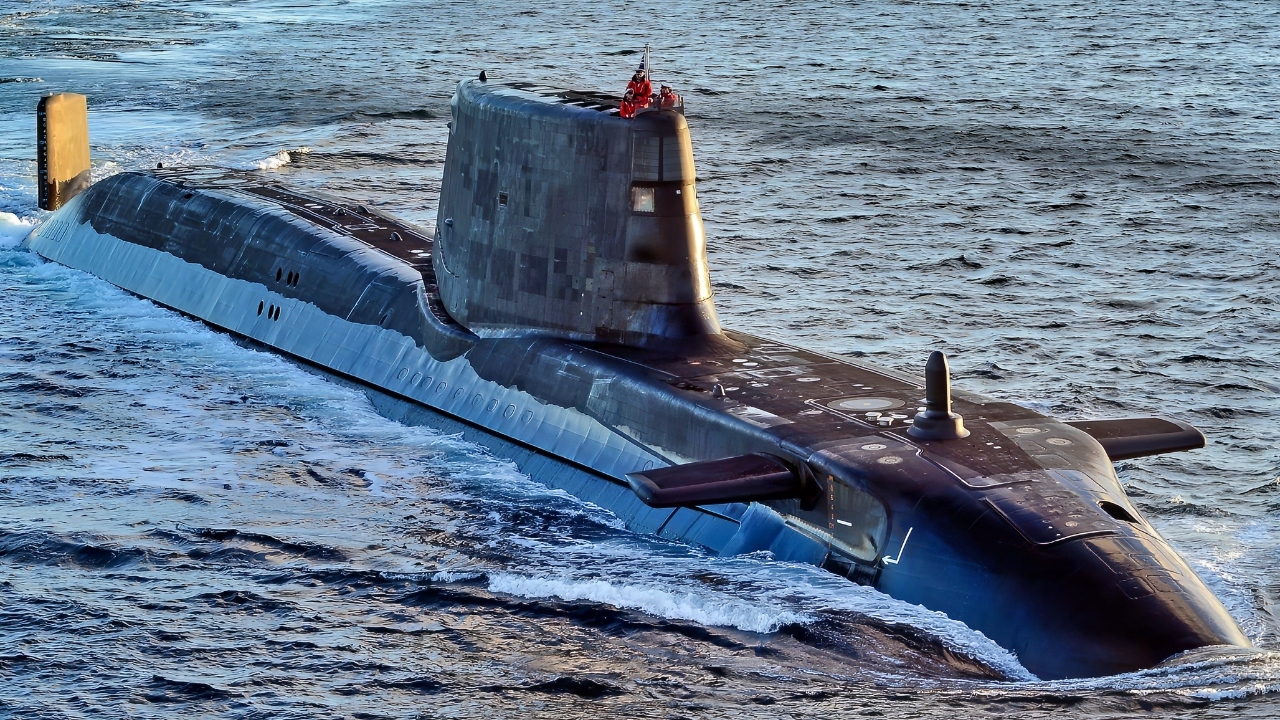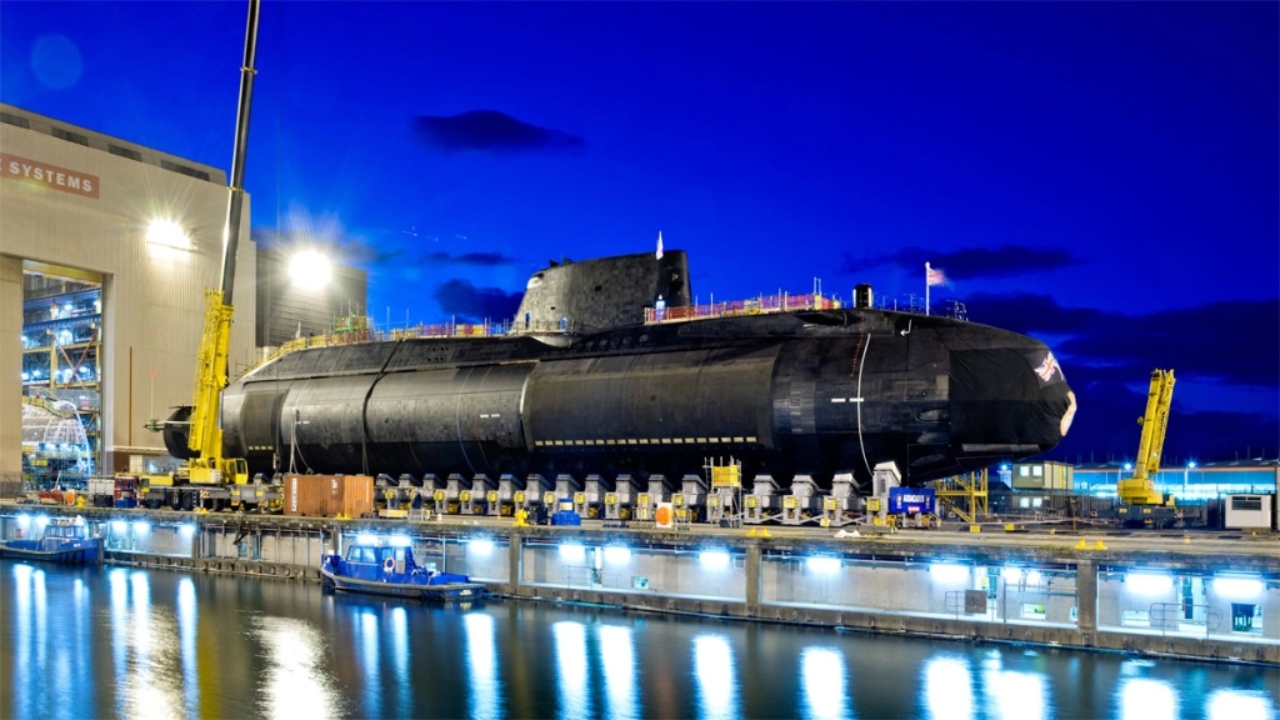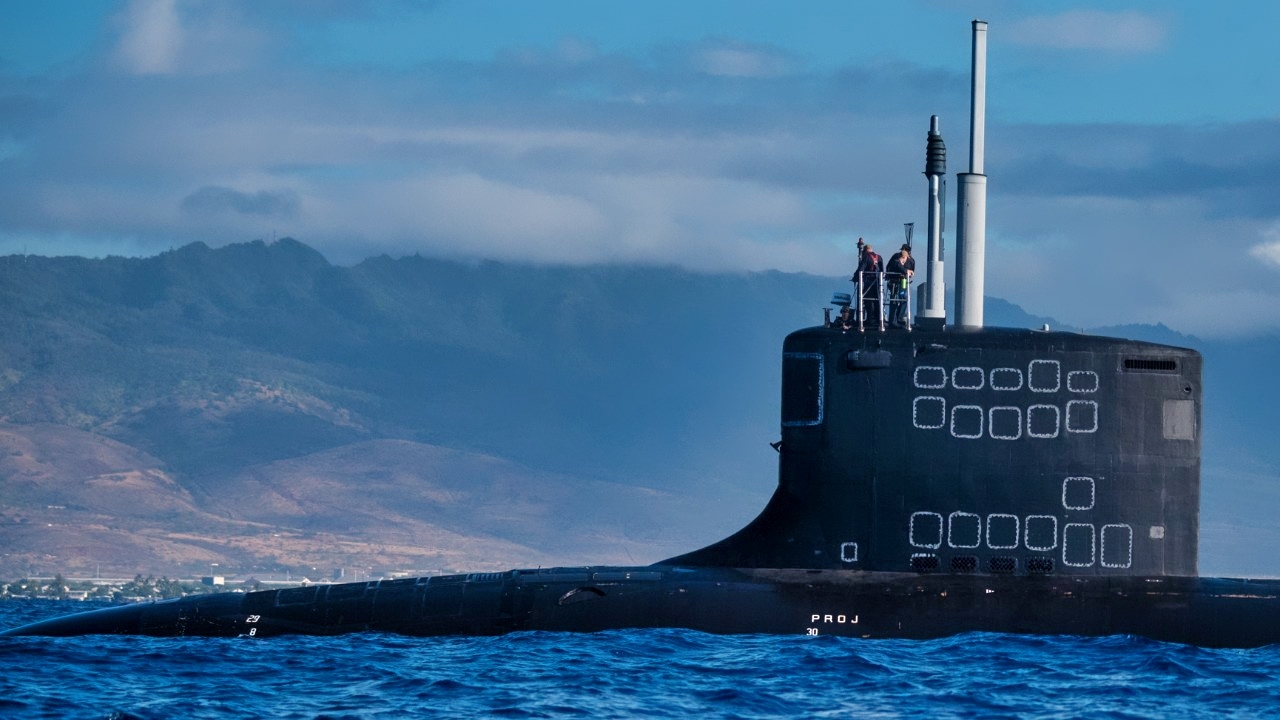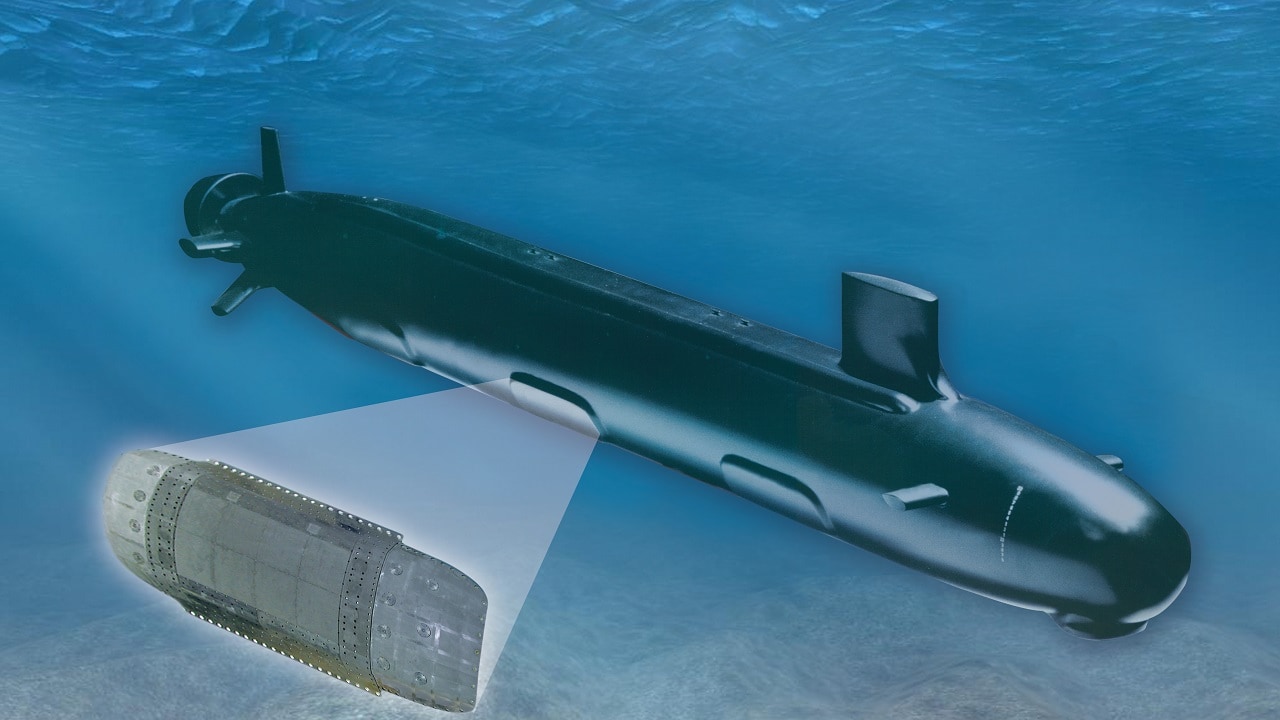Key Points and Summary – A comparison between the UK’s Astute-class and the U.S. Virginia-class Block IV nuclear attack submarines reveals two highly capable but distinct designs shaped by national strategies.
-While similar in size and stealth (with Astute potentially quieter), they differ significantly in armament and production scale.

Astute-Class Submarine Royal Navy. Image Credit: Creative Commons.

Astute-Class Submarine. Image Credit: Creative Commons/BAE Systems.
-The Virginia-class possesses greater strike capability with its dedicated Vertical Launch System tubes for Tomahawk missiles, whereas the Astute relies solely on torpedo tubes.
Reflecting U.S. global reach needs, the Virginia-class is built for mass production and multi-mission roles, while the smaller, seven-boat Astute program focuses on ASW and regional deployment.
UK’s Astute-Class vs. America’s Virginia-Class: Which Nation Builds the Better Submarine?
BAE Systems developed the Astute-class for the Royal Navy to replace the aging Swiftsure and Trafalgar classes.
Although its conceptual roots trace back to the Cold War, the design was adapted for post-Cold War missions, emphasizing stealth, anti-submarine warfare (ASW), and global deployability.
In contrast, the Virginia-class was designed by General Dynamics Electric Boat and Huntington Ingalls Industries for the U.S. Navy to replace the Los Angeles-class submarines.
The Block IV variant is part of a modular evolution of the Virginia-class, focusing on cost-efficiency, reduced maintenance, and enhanced multi-mission capabilities.
This reflects the U.S. Navy’s need for persistent global presence, strike capability, and support for special operations.

180709-N-KC128-1131 PEARL HARBOR (July 9, 2018) – Multi-national Special Operations Forces (SOF) participate in a submarine insertion exercise with the fast-attack submarine USS Hawaii (SSN 776) and combat rubber raiding craft off the coast of Oahu, Hawaii during Rim of the Pacific (RIMPAC) exercise, July 9. Twenty-five nations, 46 ships and five submarines, about 200 aircraft, and 25,000 personnel are participating in RIMPAC from June 27 to Aug. 2 in and around the Hawaiian Islands and Southern California. The world’s largest international maritime exercise, RIMPAC provides a unique training opportunity while fostering and sustaining cooperative relationships among participants critical to ensuring the safety of sea lanes and security of the world’s oceans. RIMPAC 2018 is the 26th exercise in the series that began in 1971.` (U.S. Navy photo by Mass Communication Specialist 1st Class Daniel Hinton)
Specs and Propulsion
In terms of physical dimensions, the Astute-class is shorter at approximately 97 meters in length compared to the Virginia-class Block IV’s 115 meters.
However, the Astute is slightly wider, with a beam of 11.3 meters versus the Virginia’s 10 meters. Both submarines have a submerged displacement of around 7,800 to 7,900 tons, making them comparable in overall size and weight.
The Astute’s compact design favors maneuverability and stealth, while the Virginia’s longer hull accommodates more internal volume and payload flexibility.
Nuclear reactors power both submarines: Rolls-Royce PWR2 for the Astute and the S9G reactor for the Virginia-class.
Each uses a pump-jet propulsion system, which significantly reduces acoustic signatures compared to traditional propellers.
These systems allow both submarines to remain submerged for up to 90 days, with endurance limited only by food and crew stamina.
The Virginia-class Block IV introduces improvements to maintenance cycles, enabling 15 deployments over its service life —1 more than its predecessor, Block III. This reflects a design philosophy focused on lifecycle efficiency and operational availability.
Armament and Electronics
In terms of armament, both use similar armaments but differ in how much munitions they can carry. The Astute-class is equipped with six 21-inch torpedo tubes capable of launching Tomahawk Block IV cruise missiles and Spearfish heavyweight torpedoes. However, it lacks a vertical launch system (VLS), meaning all weapons must be fired through the torpedo tubes. This limits its ability to deliver rapid missile salvos.
The Virginia-class Block IV, on the other hand, features two Virginia Payload Tubes capable of launching up to 12 Tomahawk missiles, in addition to four 21-inch torpedo tubes for Mk-48 ADCAP torpedoes. This gives the Virginia-class a clear advantage in strike capability and payload flexibility. It can also deploy mines and unmanned underwater vehicles (UUVs), further enhancing its versatility.

Image of Virginia-Class Submarine. Image Credit: Creative Commons.
Both submarines feature state-of-the-art combat systems and sensors. The Astute-class features the Thales Sonar 2076 suite, which is widely regarded as one of the most advanced sonar systems in the world. It also uses digital optronic masts instead of traditional periscopes, along with systems like the Atlas DESO 25 echosounder and Raytheon Successor IFF.
Its integrated Command and Control System (CCS) provides comprehensive tactical awareness. The Virginia-class Block IV is equipped with the AN/BQQ-10 sonar suite and the AN/BYG-1 combat system.
It also uses photonic masts with high-resolution cameras and sensors and is designed with an open architecture that allows for future upgrades. While both submarines offer exceptional sensor capabilities, the Virginia-class benefits from greater modularity and long-term adaptability.
Stealth and Crew Accommodations
Stealth is a critical feature for both classes. The Astute-class is considered one of the quietest submarines ever built, thanks to its turbo-electric drive and extensive use of anechoic tiles that absorb sonar waves.
Its acoustic discretion is particularly valuable in contested waters. The Virginia-class also employs pump-jet propulsion and anechoic coatings to minimize noise, and is optimized for stealth in both littoral and deep-sea environments. While both are extremely quiet, some assessments suggest the Astute-class may have a slight edge in acoustic stealth.
The Astute-class operates with a crew of around 98, with capacity for up to 109 personnel. Its high level of automation reduces the need for a large crew, which is advantageous for navies with limited personnel resources.
The Virginia-class Block IV supports a crew of approximately 135, including 15 officers and 120 enlisted personnel. This larger crew reflects the submarine’s broader mission set and longer deployment durations. Both submarines feature advanced water and air recycling systems, ensuring habitability during extended missions.
Strategic Roles
The Astute-class costs approximately £1.65 billion per unit, based on 2015 estimates, and only seven units are planned.
In contrast, the Virginia-class Block IV costs around $2.8 billion per unit, rising to $4.3 billion when the Virginia Payload Module (VPM) is included.
Ten Block IV submarines are planned as part of a much larger Virginia-class program, which aims to produce up to 66 submarines. Despite being more expensive, the Virginia-class is designed for scalability and mass production, while the Astute-class is more limited in scope but offers high capability per unit.
Many of the design differences are due to the differences in strategic doctrine between the U.S. and the UK. The Astute-class is primarily focused on operations in the North Atlantic, European waters, and global deployments aligned with UK defense policy. It emphasizes anti-submarine warfare, covert surveillance, and support for special forces.
The Virginia-class Block IV, by contrast, is designed for global reach, including operations in the Pacific, Atlantic, and Arctic theaters.
It supports strike missions, intelligence, surveillance, reconnaissance (ISR), special operations, and ASW.
The Virginia-class operates from multiple U.S. bases, including Pearl Harbor, Norfolk, and San Diego, as part of the U.S. Navy’s global posture.
About the Author: Isaac Seitz
Isaac Seitz, a Defense Columnist, graduated from Patrick Henry College’s Strategic Intelligence and National Security program. He has also studied Russian at Middlebury Language Schools and has worked as an intelligence Analyst in the private sector.
More Military
China’s New Aircraft Carrier Has 1 Big Advantage over the U.S. Navy
The B-21 Raider Stealth Bomber Has a New Problem: The Government Shutdown
The B-1B Lancer Bomber Has a Message for the Air Force
The B-2 Spirit Bomber Has 1 Big Advantage over Russia and China
Nuclear Aircraft Carrier USS Nimitz Will Be Retired Next Year: It Might Be a Big Mistake










